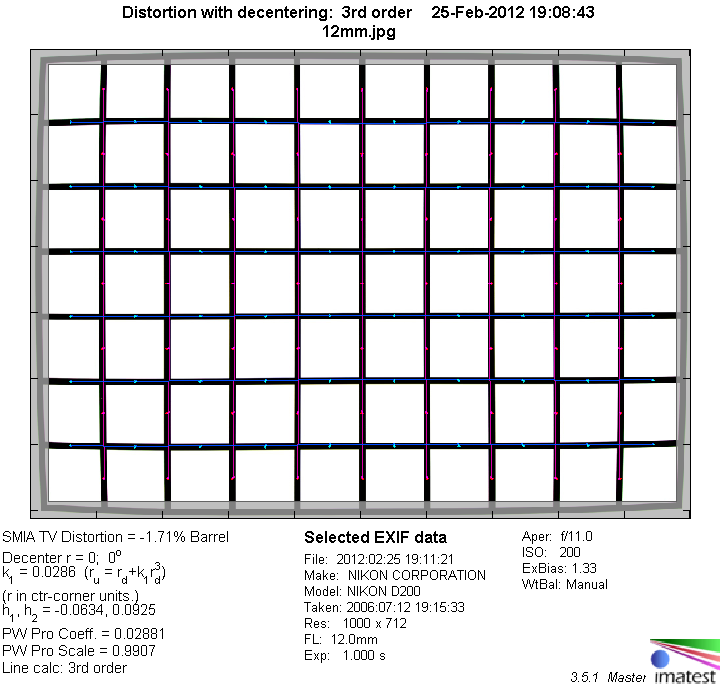|
Nikkor AF-S DX 12-24mm f/4G IF-ED - Review / Test Report - Analysis |
|
Lens Reviews -
Nikon / Nikkor (APS-C)
|
|
Page 2 of 3

Distortion
The Nikkor shows a relatively pronounced degree of 1.7% barrel distortion at the wide end of the zoom range, changing to slight pincushion distortion at 20mm and 24mm. At around 16/17mm, both types even out and consequently the lens shows almost no distortion at these focal lengths.
Compared to other lenses in this range this is a pretty good characteristic.
|
Move the mouse cursor over the focal length text marks below to observe the respective distortion
|
| 12mm |
16mm |
20mm |
24mm |
|

|
The chart above has a real-world size of about 120x80cm.
Vignetting
At wide-open aperture the Nikkor shows a noticeable degree of vignetting regardless of the focal length - this is quite typical for dedicated DX lenses. Stopping down to f/5.6 and more so to f/8 reduces the problem significantly to a degree which should no longer be relevant under field conditions.

MTF (resolution)
The lens offers excellent center resolution from the maximum f/4 aperture down to f/8 at all tested focal lengths, except for 20mm, where the resolution is just a tad lower at f/4. At f/11, diffraction reduces sharpness to slightly lower levels.
The borders show good to very good resolution throughout the whole tested range, while the extreme corners perform somewhat disappointing at large apertures, especially at both ends of the zoom range. Stopped down, however, the lens is able to achieve good to very good resolution here, too.
The lens shows some field-curvature, especially at 12mm.
Please note that the MTF results are not directly comparable across the different systems!
Below is a simplified summary of the formal findings. The chart shows line widths per picture height (LW/PH) which can be taken as a measure for sharpness.
If you want to know more about the MTF50 figures you may check out the corresponding Imatest Explanations

Chromatic Aberrations (CAs)
Just like vignetting, CAs (color shadows at harsh contrast transitions) reach values of above 2 pixels at the image borders.
However, CAs can easily be corrected in software or by the camera itself (most modern Nikon DSLRs remove CAs themselves if you shoot JPGs).

|